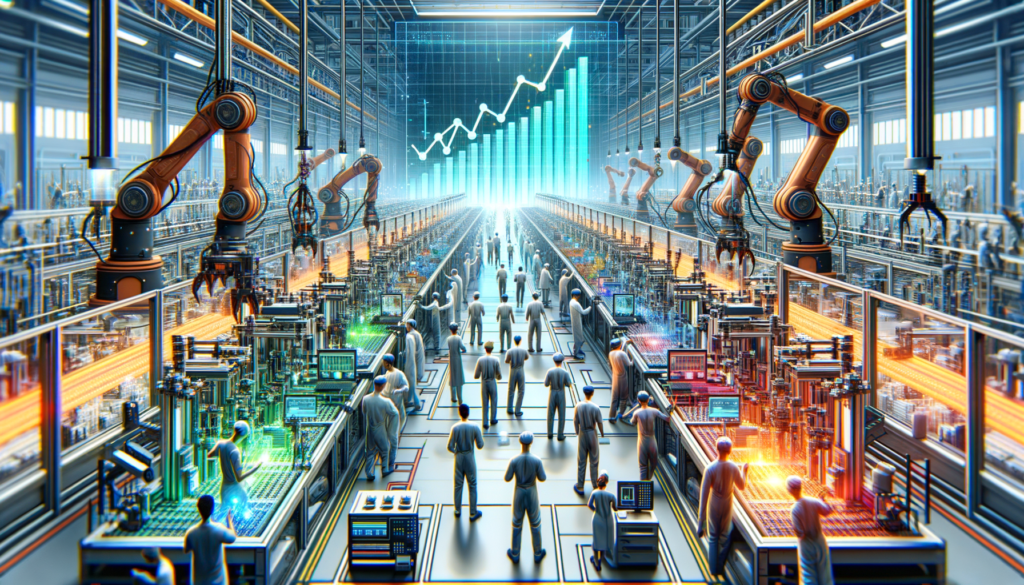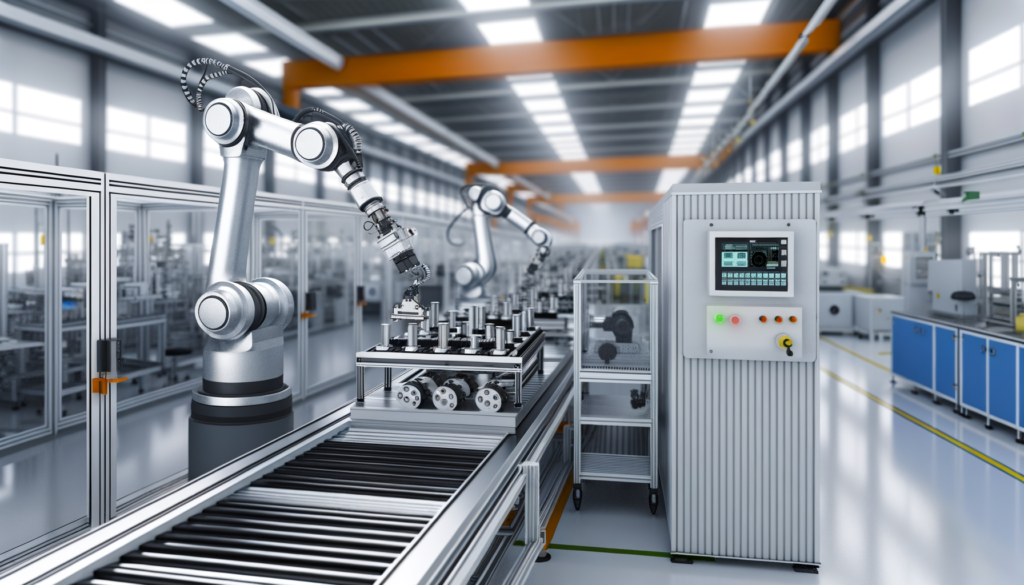The Rise of Hon Hai: An Overview
Hon Hai Precision Industry Co., Ltd., commonly known as Foxconn, is a leading player in the global electronics manufacturing landscape. The Taiwanese company has garnered attention for its significant role in assembling Apple’s iPhones, among a myriad of other consumer electronics. In recent times, Hon Hai has reported a notable rebound in its revenue, attributed largely to its strategic integration of artificial intelligence (AI) technologies across its manufacturing processes. This pivot toward AI not only showcases the company’s commitment to innovation but also reflects broader industry trends where automation and intelligence converge to drive operational efficiency.
The global technology market is experiencing a paradigm shift, driven by advancements in AI. Companies are increasingly recognizing the value of adopting AI solutions to streamline operations, enhance productivity, and improve overall profitability. For Hon Hai, this transition aligns with its goals to optimize manufacturing processes, reduce costs, and elevate product quality. As a result, investors and industry observers are keenly watching the company’s journey, assessing its ability to leverage AI for sustainable growth.
With the recent financial updates revealing a surge in revenue, it becomes evident that Hon Hai’s integration of AI is not just a temporary trend but a strategic move designed to secure long-term success in an intensely competitive market.
AI Integration: A Game-Changer for Manufacturing
The integration of AI into manufacturing processes is more than just a technological upgrade; it signals a transformative change in how products are conceived, designed, and manufactured. For Hon Hai, incorporating AI has offered several key advantages:
1. Enhanced Operational Efficiency: Through automation, Hon Hai has significantly reduced manual intervention in assembly lines. AI algorithms can predict when machinery needs maintenance, thereby minimizing downtime and ensuring continuous production.
2. Improved Quality Control: AI systems facilitate real-time monitoring of production quality. Machine learning algorithms analyze production data to identify defects early in the manufacturing process, allowing for immediate corrective actions that enhance product reliability.
3. Reduced Labor Costs: While Hon Hai continues to employ a large workforce, automation powered by AI allows the company to optimize labor costs. Routine tasks are handled by machines, freeing up human workers to focus on more complex and value-added roles.
4. Data-Driven Decision Making: AI enables the collection and analysis of vast amounts of data generated during manufacturing. This information is invaluable for making informed decisions regarding workflow optimization, inventory management, and supply chain efficiency.
As major companies across various sectors continue to embrace AI, Hon Hai’s commitment to incorporating these technologies positions it at the forefront of the industry. By moving towards a more data-driven and automated approach, the company is not only improving its own operations but also setting a precedent for others to follow.
The Impact on Revenue Growth
Hon Hai’s recent revenue figures illustrate a remarkable turnaround for the company. It has managed to sustain revenue growth predominantly due to the successful application of AI in its manufacturing practices. Specific financial metrics shed light on this trend:
1. Year-on-Year Revenue Increase: Hon Hai reported a significant increase in revenue compared to last year. This upward trajectory is indicative of the successful implementation of AI technologies that streamline operations and enhance productivity.
2. Surge in Client Orders: With improved efficiency, Hon Hai has become more agile in responding to client needs. The ability to deliver products faster and maintain quality standards has attracted a growing number of orders from major tech companies, including Apple.
3. Stronger Market Positioning: As demand for consumer electronics continues to rise, Hon Hai’s financial performance bolsters its position in the market, making it a key player in the electronics manufacturing sector.
With revenue growth fueled by AI adoption, investors are optimistic about Hon Hai’s future prospects. The ongoing demand for technology, alongside the company’s innovative approach, sets the stage for sustained profitability and market success.
Challenges and Considerations Ahead
While the integration of AI has brought about significant benefits, it is essential to acknowledge the challenges Hon Hai faces on this journey. The transition toward automation must be managed carefully to mitigate potential risks.
1. Workforce Adaptation: One of the most pressing challenges is ensuring that the existing workforce is adequately prepared for the transition. Employees may need retraining to adapt to new technologies, and there may be fears around job security as automation increases.
2. Technology Integration: Successfully integrating AI into existing manufacturing systems can be complex. Hon Hai must invest in the right infrastructure and ensure that new technologies seamlessly mesh with legacy systems.
3. Continuous Innovation: The tech field is characterized by rapid innovation. Hon Hai must remain focused on developing and implementing the latest advancements in AI to maintain competitive advantages.
4. Regulatory Compliance: As automation and AI become more prevalent, regulatory frameworks are evolving. Hon Hai must stay abreast of regional and international regulations related to AI, data usage, and labor, ensuring compliance to avoid legal pitfalls.
Addressing these challenges will be critical in ensuring that the integration of AI translates into long-term success rather than short-term gains. By proactively managing these considerations, Hon Hai can safeguard its revenue growth and industry reputation.
The Future of AI in Manufacturing
The future of AI in manufacturing holds exciting possibilities, and Hon Hai is poised to seize opportunities that lie ahead. As the technology continues to evolve, the potential applications grow exponentially:
1. Advanced Robotics: The use of AI-powered robotics in manufacturing is expected to increase. These robots will become more sophisticated, enabling them to perform complex tasks alongside human workers effectively.
2. Predictive Analytics: As Hon Hai gathers more data, predictive analytics powered by AI will help the company anticipate market trends, optimize production schedules, and manage inventory levels more efficiently.
3. Customization and Personalization: Consumers increasingly seek personalized products. AI can help manufacturers, including Hon Hai, create tailored offerings by utilizing data on customer preferences and behaviors.
4. Sustainability Initiatives: AI can also play a critical role in sustainability efforts. Hon Hai could utilize AI to minimize waste during production, optimize resource usage, and develop eco-friendly technologies.
By exploring these pathways, Hon Hai can continue to innovate and lead in the field of electronics manufacturing while contributing positively to environmental sustainability and enhancing consumer satisfaction.
Conclusion: A Path Forward
Hon Hai’s journey of integrating AI into its operations showcases a compelling narrative of resilience and innovation. By embracing automation and data-driven decision-making, the company has achieved impressive revenue growth and strengthened its market position. However, the transition to an AI-centric model is not without its challenges. By focusing on workforce adaptation, seamless technology integration, and compliance with evolving regulations, Hon Hai can navigate these obstacles effectively.
The future of manufacturing is set to be defined by AI, and Hon Hai is well-equipped to navigate this terrain. As the company continues to push the boundaries of what’s possible with technology, it not only paves the way for its success but also sets a benchmark for others in the industry. With a commitment to innovation and strategic foresight, Hon Hai is on a promising trajectory, potentially transforming the face of electronics manufacturing for years to come.



